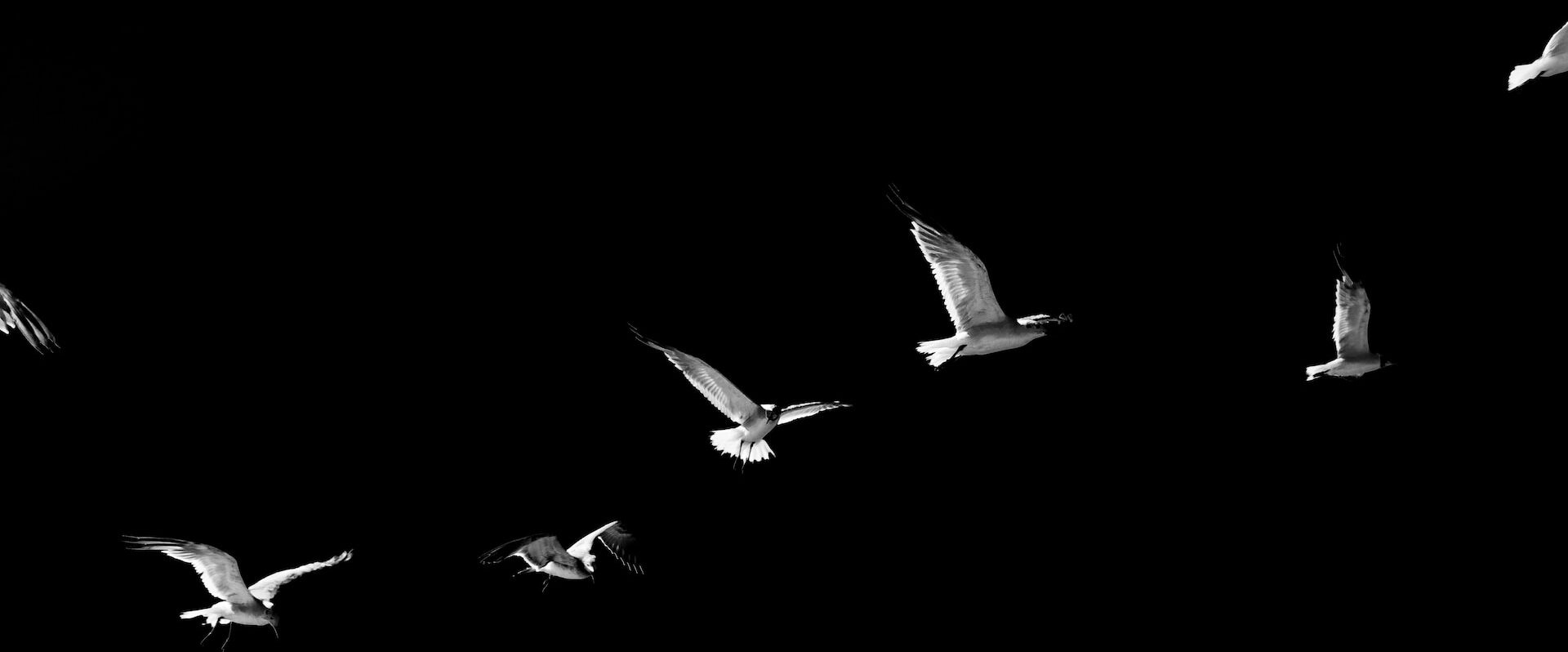It’s a typical day at elementary school. Students sit at their desks, notebooks, pencils, and favorite erasers at the ready when a random woman they’ve never seen before walks through the classroom with a ladder and climbs out the window. They exchange glances of astonishment, letting out choruses of whaaaaat? No way! What. Is. Happening??
Their astonishment only grows as their teacher introduces the window-climbing-stranger, the Urban Bird Project’s very own Lauren Granger, as a researcher. She wasn’t climbing out windows for the fun of it, she was installing a sensor station on the roof to track avian movements. Their school, Woodlawn Academy, had partnered with the Urban Bird Project to do research on birds right from their own classrooms. The room exploded with a barrage of questions, each more excited than the last. Can a box really track bird movements? Had Lauren ever touched a bird? And,
Are you really doing science?
It’s a fair question. Within the typical, sterile definition of science, there’s not much room for boots on the ground. Pristine white lab coats, yes. Blue latex gloves, absolutely. Mud-caked hiking boots, on the other hand? Ladders being pushed out windows? Not so much. Science is perceived as a cold, heartless endeavor. It doesn’t leave much room for the magic of feeling a palm-sized sparrow’s heart flutter a moment before you release it into the sky. Or the wonder of the charged silence right before dawn explodes into a chorus of birdsong and insect buzzes.
But it’s exactly the sparks of magic and wonder that keep Lauren in love with research. She is more than a scientist holed up in a laboratory, she is a naturalist.
It’s hard for Lauren to pinpoint the exact moment when she fell in love with the natural world. Life as a military child exposed her to many different environments and her parents point out her early obsession with stuffed animals, but it wasn’t until high school when she began learning about the state of the natural world that she realized she was on a conservation path. It wasn’t enough to just work with animals and be a vet, she needed to protect the natural world. “I owe it to the land to better it,” she says, “It’s a duty to help protect our natural world.” To Lauren, it’s a duty not just towards wildlife, but also towards the humans that rely on the same natural resources.
Beginning her journey as an educator, Lauren wanted to work with mammals. More similar to humans than other animal groups, she was drawn to the emotion one feels when looking into a mammal’s eyes. After all, most of us can think back to a childhood dog or cat and pinpoint those moments of connection. But many of us have had similar experiences with birds, moments of wonder and beauty, and in Lauren’s first job as a field biologist tracking toucans she began noticing birds and people’s connection with birds. They are accessible to all and spark interest, making them a useful educational tool. But beyond noticing their usefulness, Lauren reconnected with her fascination with behavior. It’s a fascination that applied to human behavior as well but given that “humans don’t like to be stared at,” Lauren focused her efforts on understanding avian behavior. If you understand their behavior, Lauren explains, you’ll know what they need from their environment. “You’ve got to truly put yourself in the birds’ shoes,” she says laughing.
As a researcher with the Urban Bird Project, Lauren was finally able to bring together both her fascination with bird behavior and human behavior. Working together with San Antonio community members, Lauren led an urban ecology study on bird behavior in relation to bird feeders [Northern Cardinal Communities in San Antonio’s Westside Communities] and later conducted interviews to learn the various reasons people decided to participate. After all, it is a common instinct to slam the door on strangers that show up at your door with flyers and that is exactly what Lauren did. New to San Antonio and with no established network, Lauren knocked on doors to recruit community members willing to lend their backyards or other community spaces to the project—and that’s, of course, how she ended up clambering out of an elementary school classroom window one Monday morning. But this collaboration between the Urban Bird Project and the San Antonio community was more than just an interesting anecdote for community members or useful data for Lauren. It was an exchange of magical moments.
“I was able to share my excitement with them,” Lauren recalls with a smile, “And they were more excited than I was!”
From observing the safe catch-and-release of birds to discovering (or re-discovering) the birds in their backyards through birdfeeders, participants connected with the natural world of their own backyards in a meaningful way. And for Lauren, well, it was instant family. Lauren recounts with tears in her eyes how a community member brought up the memory of holding a bird in her hand a year later. “It was just as special for her as for me,” Lauren marvels.
This was a project that was more than scientific collaboration. It was community building, a special experience for researcher and community participant alike. Reflecting on her work as a master’s student with the Urban Bird Project, Lauren is filled with gratitude and a determination to continue doing science in a collaborative way.
“Science was an uphill battle,” Lauren admits. But it is a battle that she has fought admirably, culminating in a project that both studied avian behavior and gave back to the community—just as much as the community gave to her.



*All birds were handled under approved state and federal permits.
This blog was written by Mariel Ortega, a current environmental science master’s student at UTSA and science communication writer. Check out her blog at birdloversmusings.com.

 string(10) "expression"
string(10) "expression"